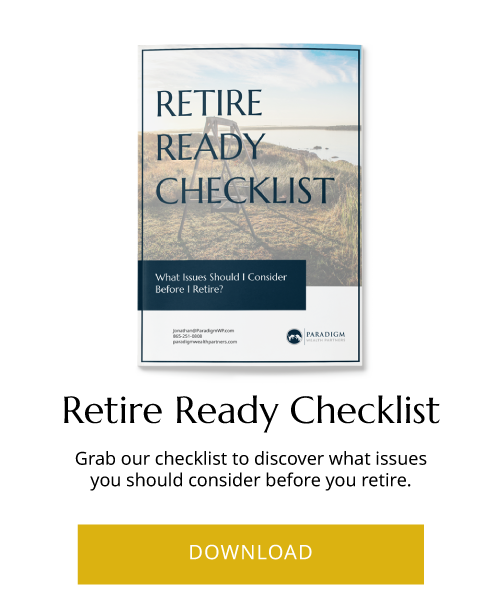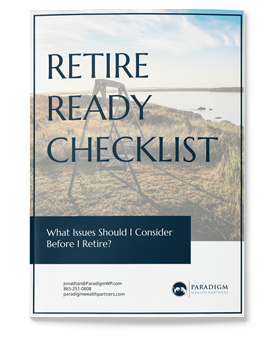6 Tips to “Fixer Upper” Your Financial Plan
Since 2013, HGTV has been airing a show titled “Fixer Upper.” Based in Waco, Texas, Chip and Joanna Gaines have been helping people find and renovate homes in need of some serious TLC. From building floating shelves to installing rustic farmhouse sinks and shiplap walls, homeowners have been inspired by the show to try their own hands at DIY and make some home improvements.
Another trend we’ve seen over the past decade or so is “DIY investing”. DIY investing means opening an online trading or robo-advisor account to manage your own investments. Two factors are driving this trend, the first is chasing market performance and hot trends and the second is controlling cost.
Many of these DIY investors are focusing on the wrong thing. They spend hours looking for the best performers and the lowest cost solutions but neglect to spend time on their financial plan. Investing absolutely plays a role in growing and maintaining your wealth but to win at the game, you must focus on the plan.
So, let’s get focused! Here are my 6 tips to “fixer upper” your financial plan.
1. Write It Down!
You’ve probably heard the quote, “A goal without a plan is a wish.” To win the money game, you must write down every aspect of your financial plan including growing your income, paying off debt, managing expenses, funding education for your children, buying a home, and investing for retirement.
List everything you can think of, even if it seems inconsequential. Have you ever gone food shopping and you just needed a few things, so you didn’t bother to write out a shopping list? What happened? You probably came home without at least one thing you meant to by. Writing things down makes sure no part of your financial plan slips through the cracks.
2. Review Your Budget
Having a budget isn’t just for people who live paycheck to paycheck. A budget shows you where your dollars are going, something that is critical for everyone no matter how much money they have.
And no matter how careful you are or think you are with your spending, there are almost certainly some expenses you could cut and areas where you are spending more money than you realized. This isn’t to say you can only spend money on essentials. You work hard for your money and you are entitled to spend some of it on pleasurable things that you enjoy. My point is, you work hard for your money and you don’t want to mindlessly waste it because you don’t keep an eye on where it’s going.
You don’t have to do this often, maybe once a quarter. Just take a look at your checking account and credit card transactions and see if there are things you can eliminate like unused gym memberships or expenses you can reduce like canceling cable in favor of a cheaper streaming service.
3. Build an Emergency Fund
Startlingly, some 40% of Americans don’t have $400 saved for an emergency; never mind a fully-funded emergency fund. An emergency fund is money set aside in a quickly accessible account to cover expenses like a home repair, mechanic bill, medical expense, or job loss.
How much should you keep in your emergency fund? I recommend 6-12 months of expenses. What does that mean exactly? Necessary expenses, things like your mortgage or rent, utilities, car payment, groceries, etc. So, it’s not 6 or 12 times what you currently spend every month. If you were to lose your job and were unsure of how long it would take to find another, you would cut out things like dinners out, retirement contributions, and subscription boxes so those kinds of things don’t need to be figured into your emergency fund goal number.
If you don’t currently have an emergency fund, it should be your priority, even over investing. If the market were in a downturn when you needed to pull money out of a taxable investment account you could lose money and if you were to withdrawal money from a retirement account, you’ll have to pay income tax on it and pay the 10% early withdrawal penalty on top of that. Investment accounts are not a substitute for an emergency fund.
4. Define Your Goals
It’s not enough to have goals, you have to pursue them too. Pursuing them requires them to be clearly defined as S.M.A.R.T. goals. S.M.A.R.T. means Specific, Measurable, Attainable, Relevant, and Timely. Here are some examples:
- Specific: Cut spending by 10%. The 10% makes this more specific than just “cut spending.”
- Measurable: Have a net worth of $1 million by age 40. You can chart your progress to see if you’re on track to reach this goal by your chosen deadline of age 40.
- Attainable: Pay off your mortgage before retirement. If you have children and you’re planning to pay for their college education, unless you’re making high six figures, doing that and paying off your mortgage by age 40 is probably not realistic. But paying it off before you retire is attainable with proper planning.
- Relevant: Retire by age 45. There is a whole movement around very early retirement but if you enjoy your career, while a good goal for someone in a career they hate, it’s not a good goal for you because you’re in no hurry to retire. Don’t set a goal that has no relevance to your personal situation.
- Timely: If your goal is to max out your 401k but you’re in your 20’s and would like to buy a home in the next five years, maxing out a retirement account isn’t a timely goal. You have decades before you’ll retire but a much shorter timeline for buying a home.
5. Pay Off Debt!
Debt, specifically high-interest debt like credit card debt can strangle the success of your financial plan and cause a lot of stress in your relationship. This kind of debt should be your priority (after saving a “starter” emergency fund of $1,000).
And like any goal, you need a plan to tackle it. Just throwing extra money at various credit cards pell-mell isn’t the way forward. There are two proven methods to pay off debt faster and more efficiently:
Snowball Method: Write down all of your debts according to the amount owed, from smallest to largest. Use any extra money you can find to pay down the smallest debt while paying just the minimum payments on the rest. Once the first debt is paid off, take the money that was going to it and any extra money and throw it at the next debt on the list. You carry on this way until all the debts are paid off.
Avalanche Method: List the debt according to the interest rates, highest to lowest, the dollar amounts don’t matter. Using the same method described above, you focus on the debt with the highest interest rate and work your way down the list.
Is one method superior to the other? The avalanche method will save you the most money because the highest interest debts are being paid first. But the snowball method has a psychological advantage. Because you can pay off smaller dollar amount debts relatively quickly, it gives you a mental boost, a feeling of accomplishment, and those things can propel you forward, give you the momentum to continue a task that isn’t exactly fun. The superior method is the one that you think will work best for you.
6. Monitor Your Plan!
“Set it and forget it” is not an approach you can take when it comes to achieving financial success. Financial plans are living documents that need to change as your life changes. When do you need to review your plan? Once a year is usually enough and if you face any of these major life events your plan should be updated immediately:
- Getting married
- Getting divorced
- After the birth of each child
- Receiving a large inheritance
- Nearing retirement
Thank you for reading! Are you wanting to hear more about our financial opinions and advice? Read our blog here!
If you have questions about financial planning or would like to take steps to Create the Life You Love™, please call me, Jonathan P. Bednar, II CFP® at 865-251-0808 or email at Jonathan@ParadigmWealthPartners.com
Content in this material is for general information only and not intended to provide specific advice or recommendations for any individual. No strategy assures success or protects against loss. Investing involves risk including loss of principal.



